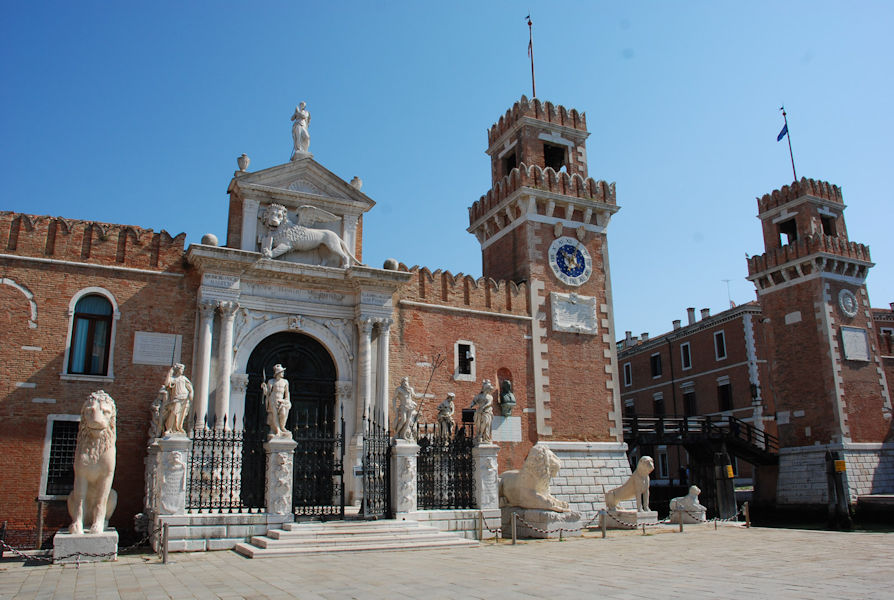Thanks to an accurate and patient maintenance activity, after about two decades of inactivity, the many Venetians and the countless tourists who pass by the Campo dell'Arsenale every day will return to 'synchronize' their clocks with the arsenal tower, perhaps recovering an ancient tradition.
The Towers of the Arsenal of Venice, in fact, are among the most admired and photographed monuments in the lagoon city, the only out-of-hours element were those hands, which have been stopped for too long.
On the other hand, the clock mechanism resulted in the need for truly expert hands and increasingly rare professionalism, in the digital age: it is indeed a pendulum clock, with anchor escapement, probably of German, dating to the first half of the 700.
Thanks to the commitment of the command of Maristudi, Marco Valentincic was tracked down, the last specialist who at the beginning of the 90s as an employee of the Venice Marine Command, was in charge of the maintenance of the complex mechanism.
The escapement, in fact, is a mechanical system that in pendulum and rocker clocks translates the oscillating movement in rotation of a gear.
The anchor is actually an improvement of the original crown system, already known since the thirteenth century, developed by Robert Hooke, who invented a more reliable system than the previous one, with lighter, cheaper and more durable gears.
The clock tower is an integral part of one of the two most ancient entrances to the great Arsenal of Venice, the so-called land entrance, the 'magna porta' that opens to the "glorious house of wonders", as defined by the historian Davis.
One of the first Renaissance works of 1460, the door developed with triumphal arch characters, embellished by winged victories and by the inscription on the frieze of the entablature to commemorate the battle of Lepanto (1571). The clock tower and the twin tower, where a sundial stands out, date back to 1686. Still well preserved, they were used to work with the masts of sailing ships.
Among them, there is the water entrance to the arsenal, the only water gate of the entire Arsenal until the early decades of the nineteenth century, when a second one was opened in the eastern part.
Well visible from one of the two towers, the clock then returns to mark the time in the lagoon.












